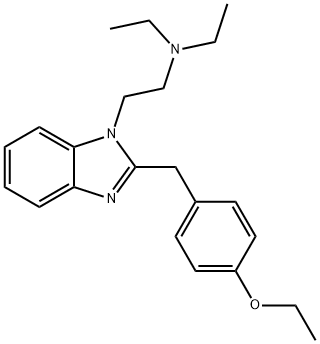Description
Etodesnitazene is a new synthetic opioid bearing structural resemblance to etonitazene, a synthetic opioid that is nationally and internationally controlled. Etodesnitazene is dissimilar in structure to synthetic opioids typically encountered in forensic casework (e.g., fentanyl, heroin); however, several analogues of this series (known as “nitazenes”) have recently emerged in several countries around the world. In vitro pharmacological data show that etodesnitazene is an active opioid agonist which is approximately four times less potent than fentanyl (a common phenomenon for analogues missing the 5-nitro group) but approximately six times more potent than morphine. Etodesnitazene was first reported by NPS Discovery in February 2021 following initial detection in a toxicology case.
Chemical Properties
Etazene dihydrochloride in seized material has been reported as a grey crystalline powder or a light-yellow powder. Etazene citrate sold as a reference material has been described as a crystalline solid.
History
Etodesnitazene is a benzimidazole derived opioid analgesic drug, which was originally developed in the late 1950s alongside etonitazene and a range of related derivatives.
Uses
Etodesnitazene is regulated as a Schedule I compound in the United States. This product is intended for research and forensic applications.
Regulatory Status
Etodesnitazene is classified as a novel opioid of the benzimidazole sub-class and is structurally dissimilar from fentanyl.Novel opioids have been reported to cause psychoactive effects similar to heroin, fentanyl, and other opioids. Novel opioids have also caused adverse events, including death, as described in the literature.Structurally similar compounds include etonitazene, metonitazene, and isotonitazene. Etonitazene and its analogue synthetic opioids were first synthesized and reported in the literature in the 1950s.Data suggest that this group of nitrocontaining analogues can have potency similar to or greater than fentanyl.Recent in vitro data suggest that etodesnitazene is less potent than fentanyl. Etodesnitazene is not explicitly scheduled in the United States; however, etonitazene and isotonitazene are Schedule I substances.
